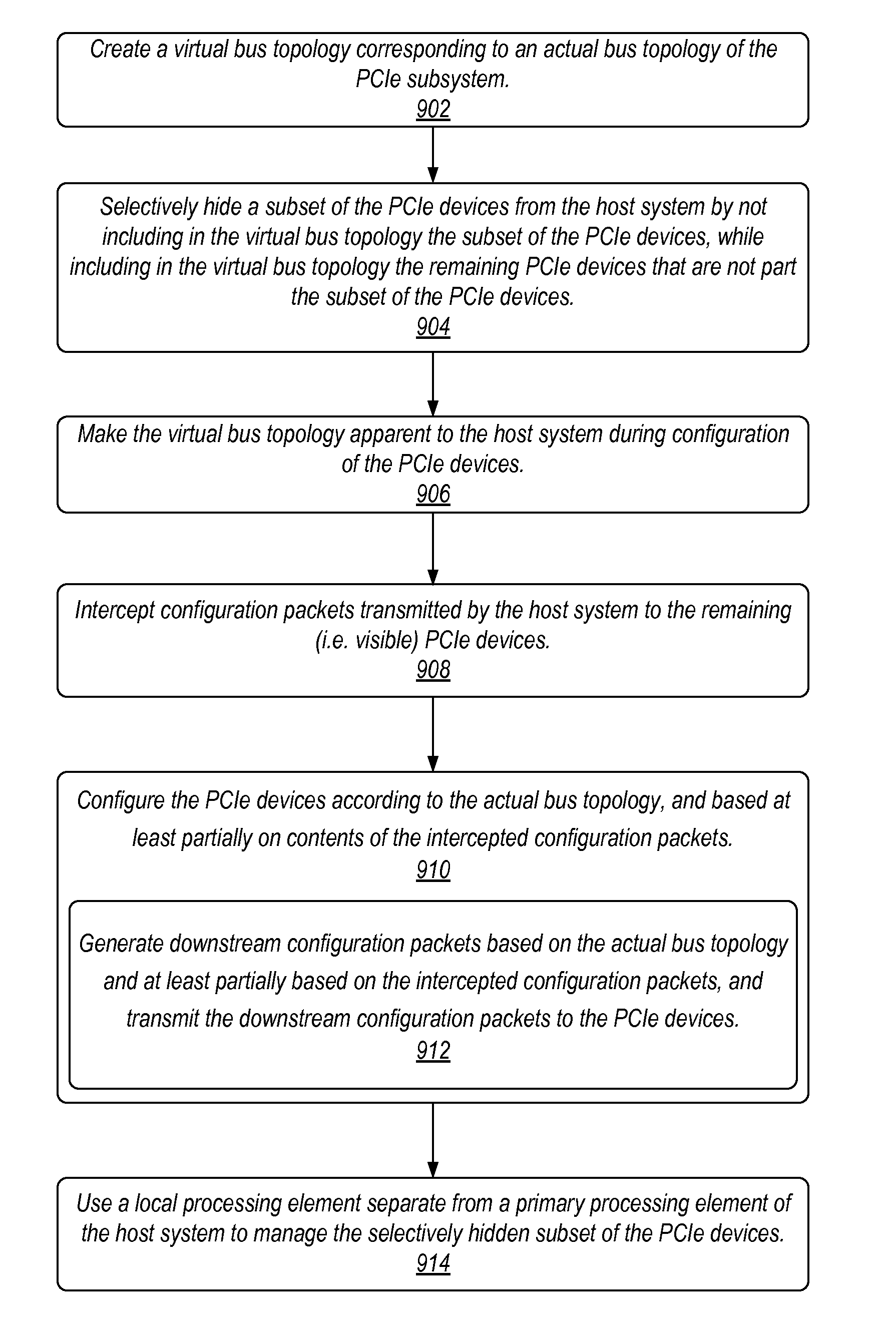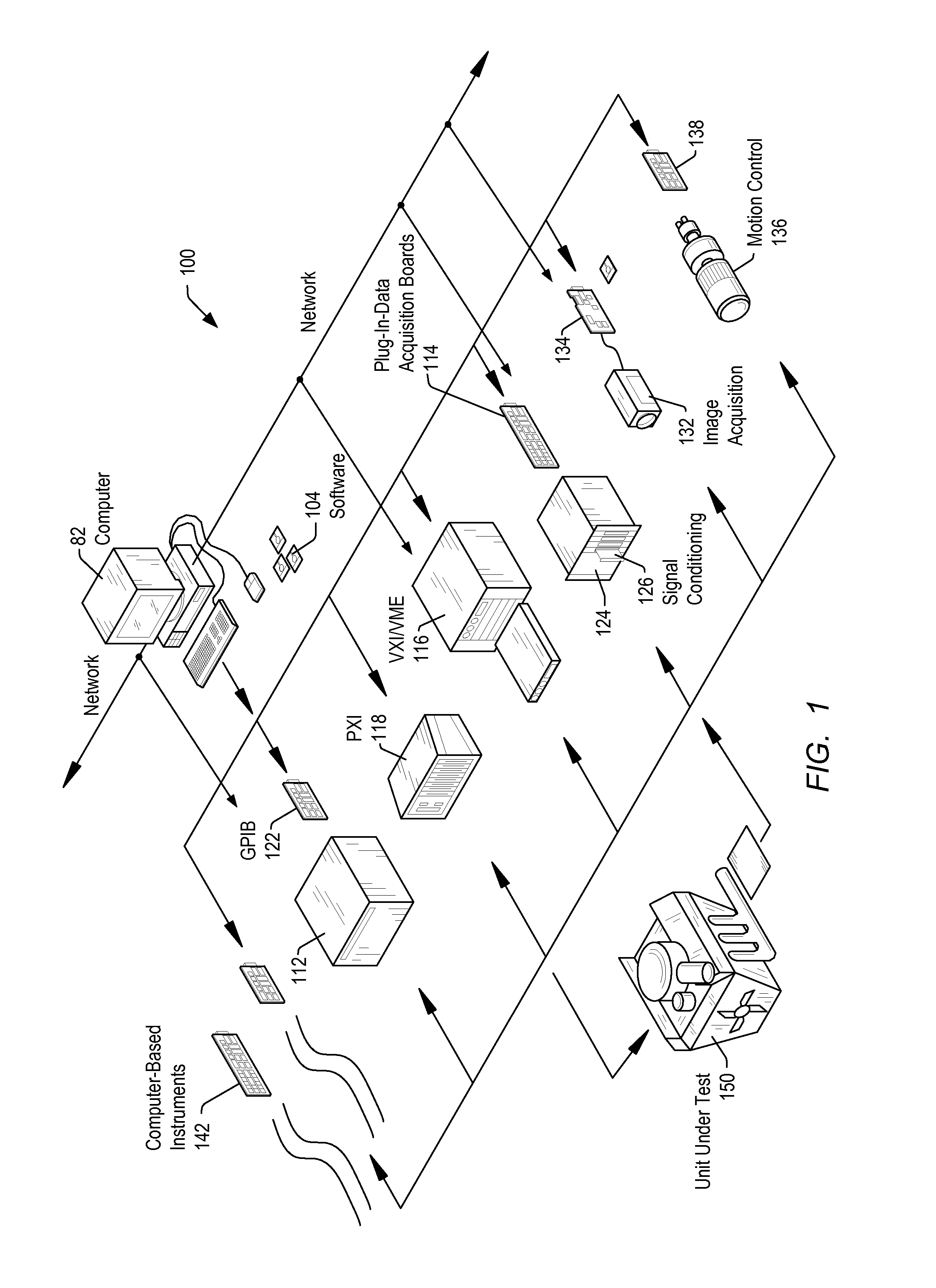Selectively transparent bridge for peripheral component interconnect express bus systems
a peripheral component and express bus technology, applied in the field of bus interfaces, can solve the problems of not being able to construct a desired system using a pcie bus, compatibility problems, simplified etc., to facilitate the introduction of a discontinuity in bus numbers, simplify complexity and bus depth, and improve system compatibility
- Summary
- Abstract
- Description
- Claims
- Application Information
AI Technical Summary
Benefits of technology
Problems solved by technology
Method used
Image
Examples
Embodiment Construction
[0027]FIG. 1 illustrates an exemplary instrumentation control system 100 which may be configured according to embodiments of the present invention. System 100 comprises a host computer 82 which may couple to one or more instruments configured to perform a variety of functions using timing control implemented according to various embodiments of the present invention. Host computer 82 may comprise a CPU (Central Processing Unit), a display screen, memory, and one or more input devices such as a mouse or keyboard as shown. Computer 82 may operate with one or more instruments to analyze, measure, or control a unit under test (UUT) or process 150. The one or more instruments may include a GPIB (General Purpose Interface Bus) instrument 112 and associated GPIB interface card 122, a data acquisition board 114 inserted into or otherwise coupled with chassis 124 with associated signal conditioning circuitry 126, a VXI (VERSAmodule Eurocard [VME] eXtensions for Instrumentation) instrument 116...
PUM
 Login to View More
Login to View More Abstract
Description
Claims
Application Information
 Login to View More
Login to View More - R&D
- Intellectual Property
- Life Sciences
- Materials
- Tech Scout
- Unparalleled Data Quality
- Higher Quality Content
- 60% Fewer Hallucinations
Browse by: Latest US Patents, China's latest patents, Technical Efficacy Thesaurus, Application Domain, Technology Topic, Popular Technical Reports.
© 2025 PatSnap. All rights reserved.Legal|Privacy policy|Modern Slavery Act Transparency Statement|Sitemap|About US| Contact US: help@patsnap.com



